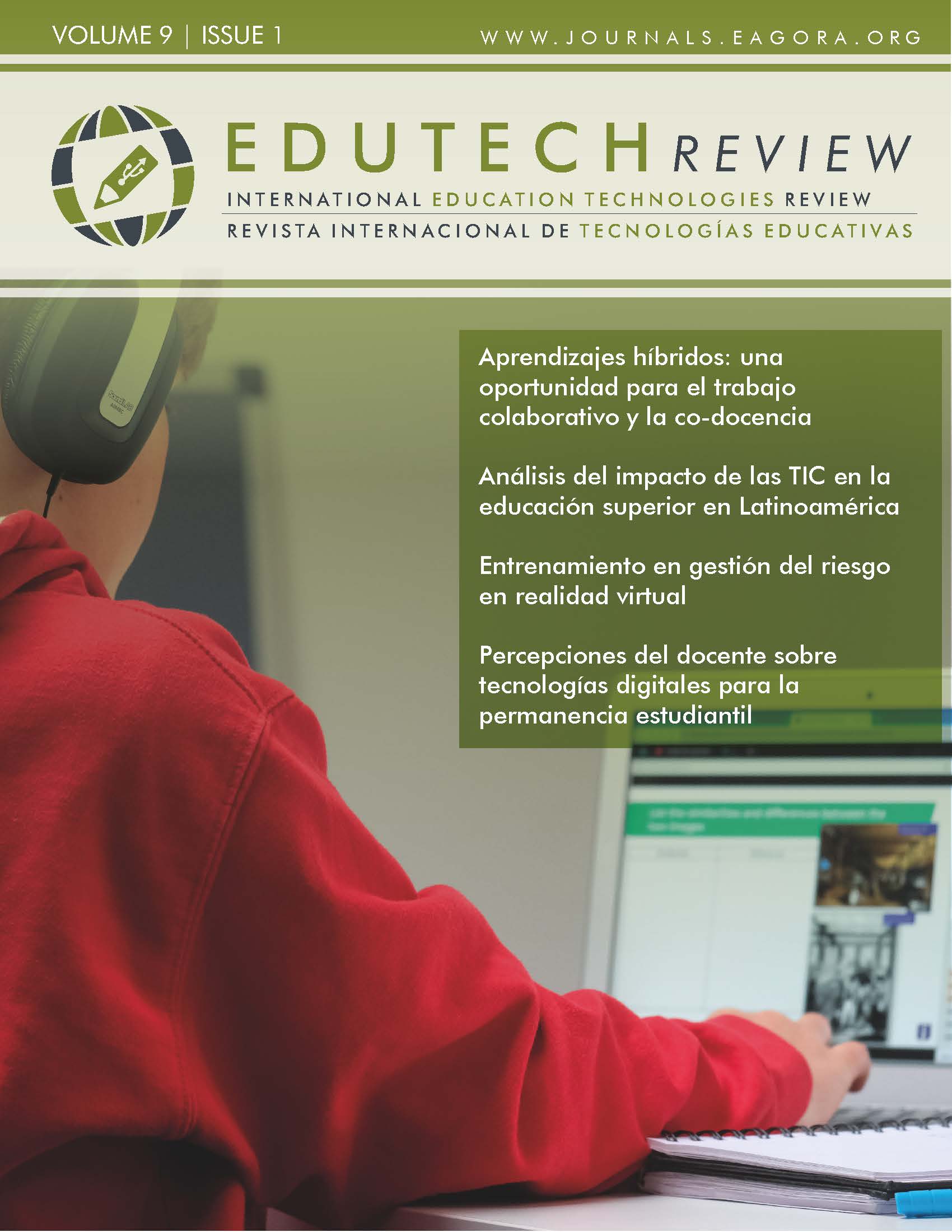Análisis del impacto de las TIC en la educación superior en Latinoamérica
DOI:
https://doi.org/10.37467/gkarevedutech.v9.3277Palabras clave:
Innovación, Metodologías, Matemática, Estadística, Economía, Finanzas didácticas, Construcción y físicaResumen
Es importante establecer que el uso de las nuevas tecnologías computacionales en la enseñanza de hoy permite al estudiante explorar, inferir, hacer conjeturas, justificar, poner a prueba argumentos y de esta forma construir su propio conocimiento. El nuevo profesional de las industrias educativas 4.0 son ciudadanos que, conscientes de los nuevos retos, se encuentran inmersos en una transformación sin precedentes: combinar la digitalización de sus procesos con el uso de algoritmos para identificar tendencias y comportamientos. Su objetivo final es promover una innovación más competitiva y de alto valor añadido, y, así garantizar el valor futuro de la educación.
Estadísticas globales ℹ️
|
1467
Visualizaciones
|
501
Descargas
|
|
1968
Total
|
|
Citas
Acuña, E. G. (2016). Matemática y Literatura en juegos de Laberintos. Universidad de Costa Rica.
Baptista. F. (2015). Educación Científica y Ciudadanía en el Siglo XXI. Universidad de Alcalá.
Dagger, D. (2007). From monolithic systems to flexible. Internet Computing, 28-32. DOI: https://doi.org/10.1109/MIC.2007.70
Delgado, C. E. (2010). The eMadrid Excellence Network. EDUCON 2010 IEEE , 137-145.
Eguiluz, J. (2020). LibrosWebs. Recuperado el 13 de diciembre de 2021 de: http://www.librosWeb.es/ajax/
Garita, J. (2010). Integrating OpenACS/dotLRN . OpenACS/.LRN TEC Costa Rica, 25.
Hernández O. y Saraí E. (11 de agosto de 2009). Las TIC y la educación en México: El papel del docente ante la transformación educativa [mensaje en un blog] Recuperado de: http://www.mcyte-saraihdezo.blogspot.com. Platón. Diálogos. Obra completa. Volumen VI. Madrid; España: Editorial Gredos.
Scott, J. W. (2016). El eco de la fantasía: la historia y la construcción de la identidad. Dialnet. DOI: https://doi.org/10.25100/lmd.v4i1.1481
Maimone, P. G. (2011). Metodología de Investigación. Recuperado el 18 de diciembre de 2021 de: https://sites.google.com/site/metodologiadelainvestigacionb7
Rajasimgham, J. T. (2016). La tecnología Educativa. Ediciones B.
Reichart ChS, C. T. (2001). Hacia una superación del enfrentamiento entre los métodos cualitativos y cuantitativos. Morata.
Ruiz, A. (1998). Valores del Cálculo de Coeficiente de Alfa de Cronbach. UCR.
Valencia, D. I. (2018). Las Tecnologías de la Información y Comunicación en el Aprendizaje. Recuperado de: https://www.uv.es/bellochc/pedagogia/EVA1.wiki
Vega García, R. (2005). La educación continua a distancia en México: transformaciones y retos. Revista de la Educación Superior, XXXIV(1), 133, 79-86. https://bit.ly/3PYbVfb
Descargas
Publicado
Cómo citar
Número
Sección
Licencia
Derechos de autor 2022 EDUTECH REVIEW. International Education Technologies Review / Revista Internacional de Tecnologías Educativas

Esta obra está bajo una licencia internacional Creative Commons Atribución-NoComercial-SinDerivadas 4.0.
Aquellos autores/as que publiquen en esta revista, aceptan los términos siguientes:
- Los autores/as conservarán los derechos morales sobre la obra y cederán a la revista los derechos comerciales.
- Transcurrido un año desde su publicación, la versión del editor pasará a estar en acceso abierto en la web de la editorial, pero la revista mantendrá el copyright de la obra.
- En el caso de que los autores deseen asignar una licencia abierta Creative Commons (CC), podrán solicitarla escribiendo a publishing@eagora.org







